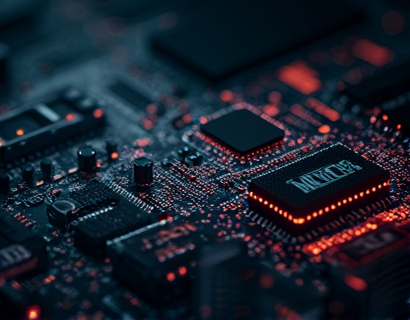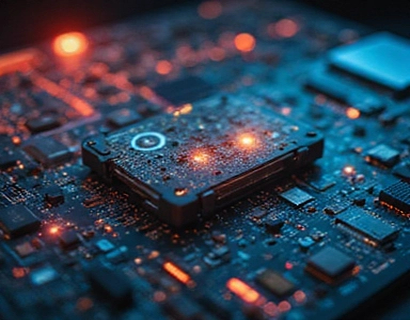Personalized AI-Driven Math Education for Children and Young Learners: Empowering Future STEM Success
The integration of Artificial Intelligence in education, particularly in mathematics, represents a significant leap forward in how we approach learning for children and young learners aged 5 to 18. This innovative approach leverages the power of AI to create personalized learning experiences, enhancing not only academic performance but also fostering a deep and lasting interest in mathematics and STEM fields. The goal is to empower young minds with the tools and confidence needed to succeed in an increasingly complex and technology-driven world.
Personalized Learning Experiences
One of the most transformative aspects of AI-driven math education is its ability to offer personalized learning paths tailored to each student's unique needs, pace, and learning style. Traditional classroom settings often struggle to provide individualized attention, leading to a one-size-fits-all approach that can leave some students behind or bore others. AI technology changes this paradigm by continuously assessing a student's performance and adjusting the difficulty and type of problems presented in real-time. This ensures that each child is challenged appropriately, keeping them engaged and motivated.
For instance, a young learner who grasps concepts quickly can move ahead without waiting for the rest of the class, while those who need more time can receive additional support and practice. This personalized approach not only helps in mastering current topics but also builds a strong foundation for more advanced concepts, reducing the likelihood of gaps in knowledge that can hinder future learning.
Interactive Problem-Solving
Interactivity is another cornerstone of AI-driven math education. Traditional textbooks and worksheets often fail to capture the attention of modern learners who are accustomed to interactive and dynamic content. AI platforms incorporate a variety of interactive elements such as gamified challenges, virtual manipulatives, and real-time feedback mechanisms. These tools make learning math not just effective but also enjoyable.
For example, students can engage in virtual experiments, solve puzzles, and participate in friendly competitions with peers from around the world. Such interactive experiences not only reinforce mathematical concepts but also develop critical thinking and problem-solving skills. The immediate feedback provided by AI systems helps students understand their mistakes and learn from them promptly, fostering a growth mindset and resilience.
Engaging Resources
Beyond personalized learning and interactive problem-solving, AI-driven math education platforms offer a rich array of engaging resources designed to spark curiosity and deepen understanding. These resources include video tutorials, interactive simulations, and comprehensive explanations that cater to different learning preferences. Visual learners, for instance, can benefit from animated explanations and graphical representations, while auditory learners can listen to detailed narrations and discussions.
Moreover, these platforms often feature curated content from various educational institutions and experts, ensuring a diverse and high-quality learning experience. The availability of such a wide range of resources means that students can explore topics in depth, delve into real-world applications, and connect math to other areas of STEM, thereby broadening their horizons and igniting a passion for lifelong learning.
Building Confidence and Academic Performance
The confidence boost that comes from mastering math through a personalized AI-driven approach cannot be overstated. As students progress through the platform, they experience a sense of achievement with each milestone reached, no matter how small. This positive reinforcement helps build self-esteem and a belief in their ability to succeed in math and beyond. Confident students are more likely to take on challenging problems, ask questions, and seek out additional learning opportunities.
Academic performance is naturally enhanced as well. With a tailored learning experience that addresses individual weaknesses and reinforces strengths, students are better equipped to handle the rigors of math curricula at all levels. The data-driven insights provided by AI systems allow educators to identify areas where students may be struggling, enabling timely interventions and targeted support. This proactive approach ensures that no student is left behind and that everyone has the opportunity to excel.
Fostering a Lifelong Passion for Mathematics and STEM
The ultimate goal of AI-driven math education is to cultivate a lifelong passion for mathematics and STEM fields. By making math accessible, engaging, and relevant, these platforms help students see the beauty and importance of these subjects. As students progress through the educational system, they develop a deeper appreciation for the role math plays in solving real-world problems, from optimizing resource allocation in cities to advancing medical research and technology.
Moreover, the skills gained through AI-driven learning—such as critical thinking, logical reasoning, and analytical skills—are highly transferable to other STEM disciplines. This holistic development prepares students not just for academic success but also for rewarding careers in science, technology, engineering, and mathematics. The early exposure and positive experiences with math set the stage for a future where STEM is not just a subject to endure but a field to explore and innovate in.
Conclusion
In conclusion, AI-driven math education represents a revolutionary approach to learning that has the potential to transform the way children and young learners engage with mathematics and STEM. By offering personalized learning experiences, interactive problem-solving tools, and engaging resources, these platforms empower students to build confidence, enhance academic performance, and develop a lasting passion for these critical subjects. As we continue to integrate AI into education, the future looks bright for those who embrace these innovative tools, setting the stage for a new generation of STEM leaders and innovators.










































